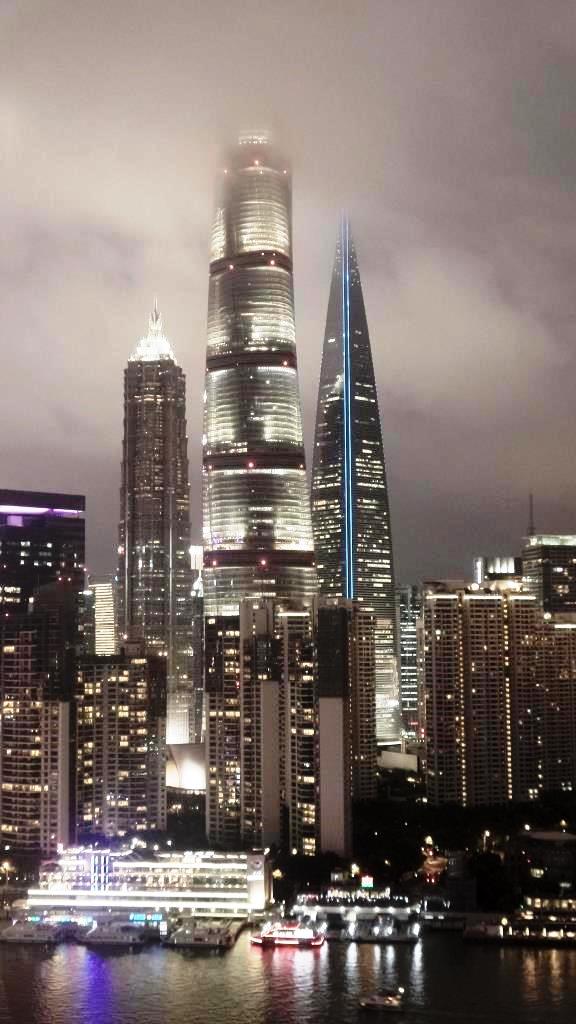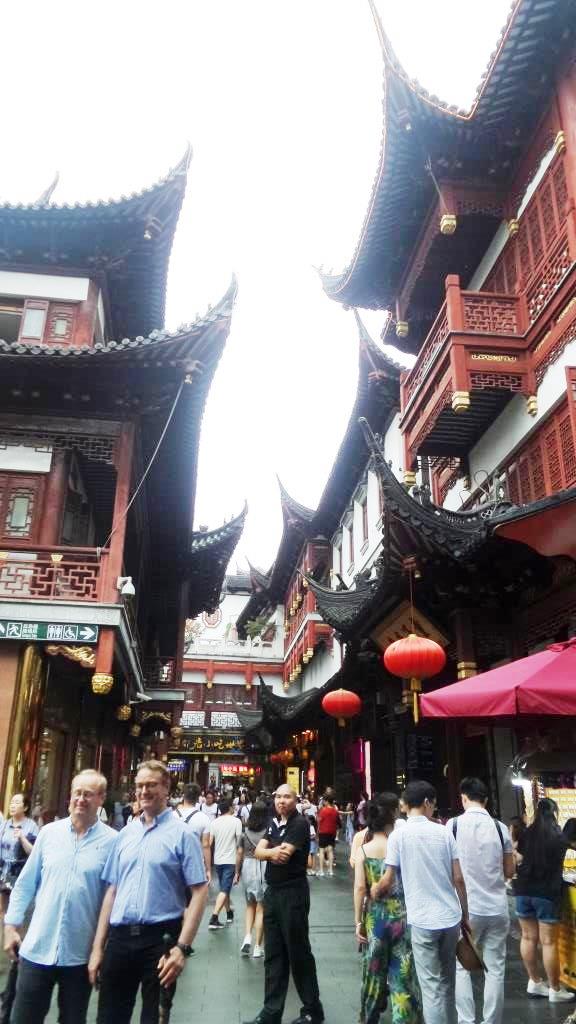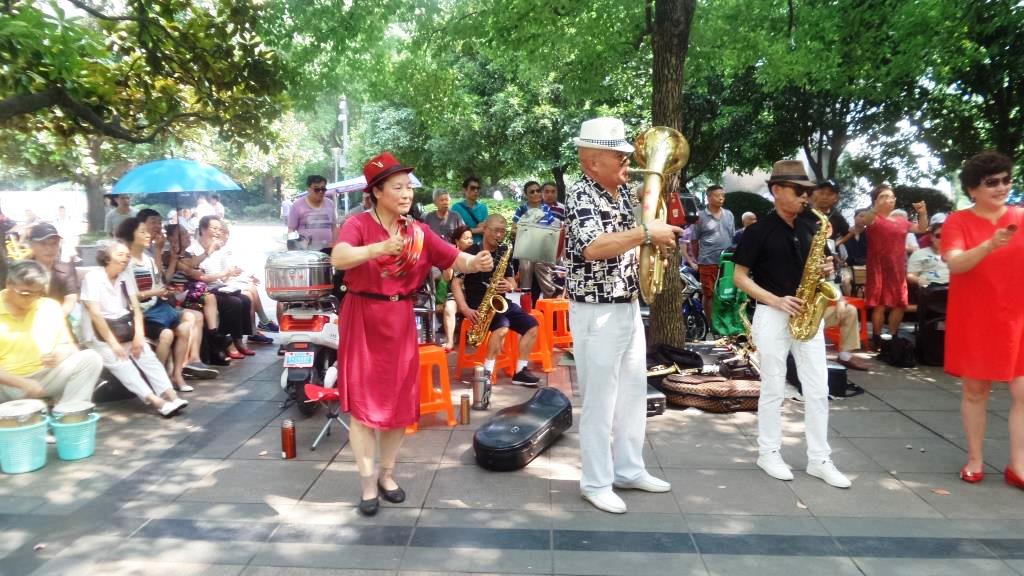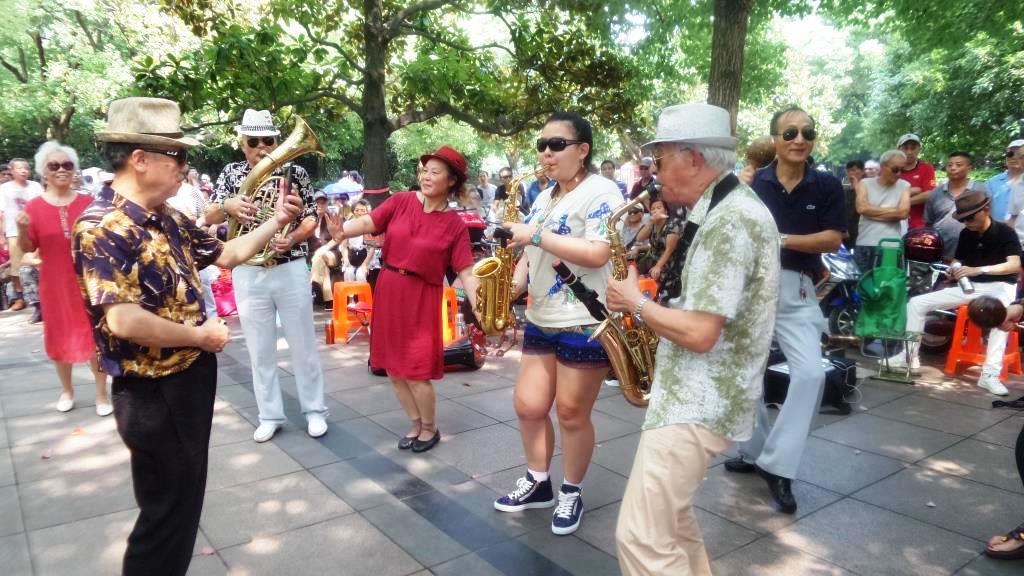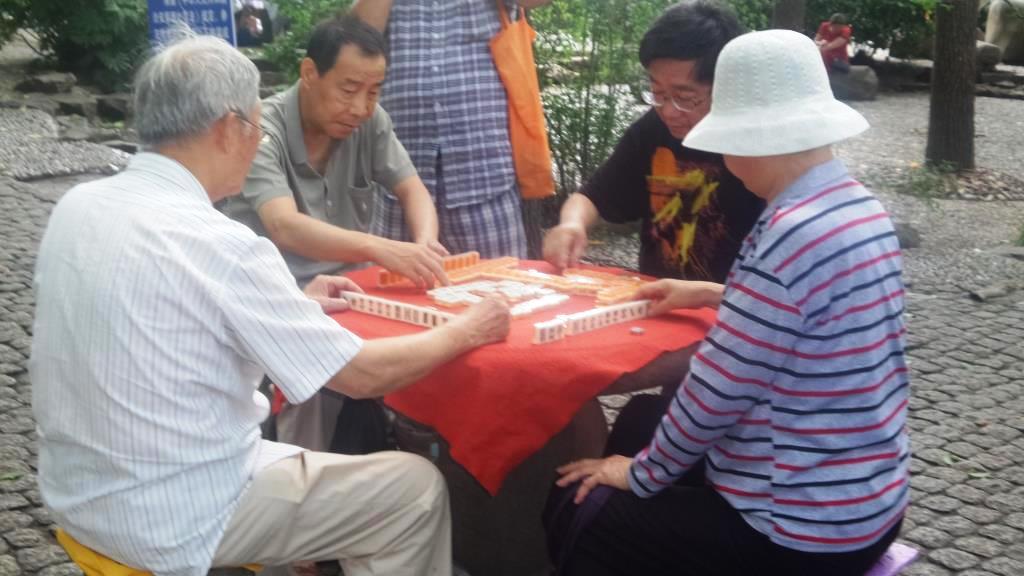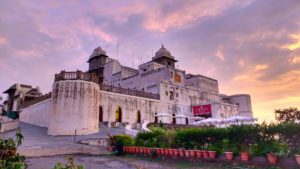La Dolce Vita The Shanghainese Way

Shanghai – A Travelogue By Punam Mohandas
Shanghai had long been one of my bucket list items. Hugely influenced by James Clavell as he described it in ‘Noble House and ‘Taipan’, Shanghai has always held the allure of mystery and romance for me in my imagination. I had been to Beijing before and did not enjoy the experience very much, apart from visiting sights such as the Forbidden Palace and the Great Wall, of course. However, friends who’d been to Shanghai assured me the two cities were very different, with Shanghai being more cosmopolitan and vibrant.
This summer, I decided I had waited long enough and was determined to finally make the trip happen. And I can honestly say – it has been one of the best experiences of my life and one that I am going to repeat just as soon as I’ve saved up enough money again! Right from the astounding Maglev, to the superb architecture of the many skyscrapers, to the cleanliness and yes, the friendliness of the Shanghainese (yes, yes, the Peking duck too!) I haven’t had my fill and must go back!
I flew with China Eastern and had a relatively good experience, perhaps because my expectations were low too! Getting around Shanghai is dashed easy as the metro system is extremely well connected, the tickets are cheap and the stations are near popular areas of interest. Taxis are not expensive; 20-25 RMB is the average fare, although heading into the city from Pudong airport will be expensive, which is why you should take the train. The city is essentially split into two halves by the Huang Pu river: Pudong and Puxi and there are two international airports: Pudong and Hongqiao. Pudong is the financial and business district while Puxi has the culture, the shopping and the nightlife. Note: I stayed in Puxi, so the below experiences are all from there.
Shanghai and the Shanghainese are so diametrically opposite to the image and perception we have of China and the Chinese, that I decided to write this travelogue differently too! Enjoy the read.
Punam Mohandas
Shanghai City
I found it easier to maneuver my way around here than in Japan! Everything is clearly signposted in English, besides, there are clear signboards on the main roads highlighting where the next metro station is, which is so helpful and saves time asking for directions from passers-by.
Seen from a height, the city view is mainly that of red-roofed houses. Shanghai has several iconic skyscrapers, such as the marvelously delicate Oriental Pearl Tower, the imposing, magnificent Shanghai Tower (the tallest in China and second tallest in the world) and many more.
Another remarkable thing I noticed (as this is not expected from the Chinese who appear so uncouth as tourists) is that there are plenty of litter bins on the streets and, what’s more, are separate for what’s recyclable material and what isn’t.
Population
A billion plus people and yet – there’s hardly any of that number to be seen out and about on the street on weekdays. Weekends yes; the parks and public spaces, especially the Bund, are crowded, but that’s to be expected. During the week, the Chinese buckle down and are remarkably focused on work and not to be seen loitering about.
Believe it or not but – I did not see a single beggar on the streets! There are no hovels around the skyscrapers, unlike Bombay. I was so stumped I actually asked one of my hosts about it. It turns out that the city fathers are keen to present a clean image to visitors to the affluent or CBD neighbourhoods; of course, in a population that size, it is not to be expected that there aren’t any poor people at all, but they’ve been moved out of the city limits and to some suburb. I call that a sensible move, as one doesn’t want to spend an arm and a leg to go traipsing off to some exotic land and literally see people without arms and legs!
People: Physical Appearance
Okay, so firstly, we’ve got to stop thinking of the Chinese as pygmies – average height for the guys is about 5”7! I saw plenty of six footers. Yes, the women – still – do have really tiny feet! Unlike their Thai counterparts, who wouldn’t be seen dead without make-up, Chinese women do not believe in “putting on their face” first thing in the morning and so one will usually see the women devoid of make-up during the morning office hour train crowd, except perhaps for a slash of bright red (always!) lipstick.
People: Society
Most people attempt to speak English while quite a few are surprisingly fluent in the language; unlike India, though, the Chinese have thrown off their British colonial shackles and speak with an American accent! The Shanghainese are tickled pink if one attempts to speak Mandarin. The younger generation and the educated lot are helpful and polite. Some of the older generation are rough, with no social graces – typical of the stereotype of the Chinese in public perception. Actually, although they do appear dour and are very loud in volume, they are quite friendly, but shy. You definitely can’t term them as “jaahil” though when it comes to civic sense; for instance, during the rainy season, all dripping umbrellas are sheathed in plastic covers when entering malls, same as Bangkok.
Sadly, the Chinese smoke a lot!
It was such a revelation to watch the middle-aged and older generation Chinese truly enjoy their lives with such simple, unadulterated fun! It’s lovely to see couples dancing in the parks or even on the pedestrian paths in the evening after dinner, doing the waltz and what is presumably the Chinese cha cha cha, with a tape recorder placed on a nearby bench!
Every Saturday and Sunday, from 2-5pm, one can find a group of people playing music and dancing at the People’s Park. I’ve been invited back! I was just passing by, hot and bothered in the heat, when I saw this and stopped to take some photos and one of the women smilingly took my hand and led me into their circle to dance. I was also handed a tambourine and joined the orchestra! I cannot recall when I have ever had such pure fun and been accepted with so much heartfelt warmth by strangers. Never in my wildest dreams would I have thought that I would experience this in China!
Most weekday mornings and afternoons, one will find senior citizens in the parks playing mahjong or cards with their friends and generally enjoying their sunset years.
Children
Chinese children are allowed to run amok in public places, shouting and screaming as their parents look on benignly, just like Indian families. I would imagine this is the most effective form of contraception, as it puts one off from having children forever!
Marriage
In India, the girl’s family gives dowry to the boy; in Thailand, the boy has to give an agreed sum of money to the girl’s family. China has the perfect solution! Here, the boy’s family helps to buy the house for the couple, while the girl’s family pays for the furnishings and possibly a car. However, in case of a divorce, this used to mean the girl would have nothing to show after years of marriage. So the law (yes, there’s a law!) has been amended so that the girl’s family can also pitch in to buy the house; this way, if there is a marital split, the assets too can be split.
Most Chinese still opt for arranged marriages! According to custom, there is a “wedding market” every Saturday and Sunday at People’s Park – and you will see only old people there! It is meant for parents and grandparents who come bride or groom hunting for their offspring. A quaint part of the custom – and something I haven’t been able to figure out, nor did the people I ask seem to know – is that the marriage brokers display the details of the girl or boy on papers that are affixed to opened umbrellas! The entire park is a sea of umbrellas and parents walk somberly by perusing the papers that have details such as the name, age, date of birth, sex, the salary and the name of the company the person works at! It all looks extraordinarily unfussy and dashed practical and above-board.
Law and Order
Nobody blows car horns in Shanghai! Strange – our countries have a similar population size, but the Chinese appear far more law-abiding and yes, civic-minded. Is it because there is no democracy there?! Most people are on bicycles, just like Europe; I don’t mean the working class, like India, but the younger, office-goer generation. Also, unlike the Thais, most Chinese will take the stairs rather than escalator. Usually, there will be no jostling in the trains in Shanghai, unlike Beijing, however, try travelling during the office rush hours and you know firsthand what the term, “sardines in a can” means! You are literally swept into the train on a wave of unwashed humanity and woe betide anyone who needs to get out at his/her stop! Similar to Bangkok, there is no concept of a queue once the train actually arrives at the platform! However, unlike Bangkok, the Chinese jabber at top volume – the airport bus to the airplane sounded like a mobile fish market!
Cost of living
Is expensive. For instance, a 50sqm flat will cost around RMB five million. People pay 10% of their salaries as tax and another 10% as insurance. Food is affordable, though. As is most shopping such as clothes.
China is almost a cashless society! In this too, they are light years ahead of India. Most financial transactions – including paying cabbies or at supermarkets – are done via WeChat or other similar applications. Most people do not even carry wallets; all they need is a phone that has a payment app.
Social security
Is awesome. Everybody over the age of 60 (it used to be 50 for women but has been amended to 60) receives a pension. The minimum is between 4-5,000RMB per person, male or female. Those who retired from government jobs can receive between 7-8,000 RMB, depending on the level they retired at.
The Chinese had/have a class system, whereas Indians had/have a caste system. This is the most distinctive difference between us and has allowed them to sail by almost effortlessly, while we still waste effort and energy on futile, petty issues.
Driving
Driving is on the left-hand side of the road, similar to Dubai. Although there are pedestrian traffic signals, same as Japan, there are still traffic cops present to monitor the scene. Something I found truly bizarre is that even when the pedestrian light is green, cars and bikes are still allowed across the roads – they must stop only if an actual pedestrian is actually crossing the road, else they are allowed to whizz past!
The most popular mode of transport for the Shanghainese is the scooter. You will see many scooters parked along the street, with a strange contraption on them, like a steel plate with chains running across and under the body of the bike. This is then padlocked when parked, so that nobody can steal the bike. Ingenious!
Taxis
Everything is in order and the cabs run by meter; of course, one does come across the odd, rude chap who barks at one. The quaint thing is that all taxi drivers sit enclosed in a giant plastic bubble – this is to safeguard them from irate passengers! There is no physical contact at all and involves the guy being some kind of contortionist when it comes to giving change back!
Superfast trains
The Maglev is a truly superior experience and one that I definitely urge all visitors to Shanghai to try. It is billed as the fastest train in the world, going at 451kmph. The usual metros are also superfast. The seating is one long bench that can seat six comfortably much like the Bangkok metro.
Airport
Has fancy stuff like fingerprint scanners and automatic flushing loos, but same old, same old, baggage X-ray system, sigh!
Metro stations
Sell everything, from lingerie, wigs, toys, shoes, cosmetics, Pink Panther merchandise, to food, but of course. Thankfully, the stations have turnstiles at the ticket gates and not the awful, stupid (not smart!) sensor gates that slam on the hips the way Bangkok does! People’s Square station is the most important and one of the busiest.
Umbrellas
I don’t know what it is about the Chinese and umbrellas! People will usually give you a polite wide berth on the roads; however, at the slightest drop of rain, out unfurl the umbrellas and that’s when they begin prodding and trampling over all unwary pedestrians! Seriously – it is a life risk!
The Bund
Is a long, wide and beautiful promenade along the Huang Pu river. One can get a bird’s eye view of the delicate Oriental Pearl Tower, or walk around the Monument to the People’s Heroes. Sadly, there are no public benches to sit on along the promenade, unlike Europe, although there are Portakabin loos. One can take a 50-minute Huang pu river cruise for 120-yuan per person, or just take the public ferry across the river to the Pudong side, for two yuan. Crossing the Bund from one end to the other by public (non airconditioned) bus is just a yuan; cheaper than Bangkok.
YuYuan Gardens
..is huge! And maze-like! Filled with souveniers, it’s where Chinese tourists can also be found shopping.
Jing ‘An Temple, the French Concession area, Shanghai circus and Zhujiajiao Water Town are other sightseeing areas of interest.
Malls and supermarkets
All the top global brands are represented in Shanghai, with the entire west Nanjing road given over as a premium shopping avenue, same as New York’s Fifth Avenue or London’s Oxford Street. Although there are more chocolate brands available than Bangkok, the chocolates themselves are more highly priced than compared to Bangkok. Unlike Tokyo, the malls do have some bench seating, but not as much as Bangkok.
Convenience stores
Limited 7Eleven’s around, which will make any Thai homesick! But there are plenty of Family Mart’s and Lawson’s.
Food
The Peking duck is possibly the most famous dish from Shanghai. Other items include pork dumplings; ‘Beggar’s Chicken’ (chicken that is wrapped first in lotus leaves then covered with mud and then cooked on slow heat in a clay oven); duck blood soup; stir-fried noodles; frogs; ‘Drunken Chicken (steamed chicken marinated overnight in liquor) and so on. Western fast food brands such as McDonald’s, Starbucks, Costa also have presence in the city.
Nationalistic pride
Although street signs are in English, they will always have the Chinese script version too (why can’t we make Hindi our unifying language?!) and most people own indigenous made mobile phones such as Huawei. Furthermore, while global fast food chains such as McDonald’s, Dunkin Donuts, KFC, Costa Coffee etc may have outlets here, at the airport Duty Free, all the confectionery items are Chinese made.
Punam Mohandas asserts her right to be identified as the author of this work. Any views or opinions expressed in this review is that of the author. All copyright and pictures are the property of the author.


